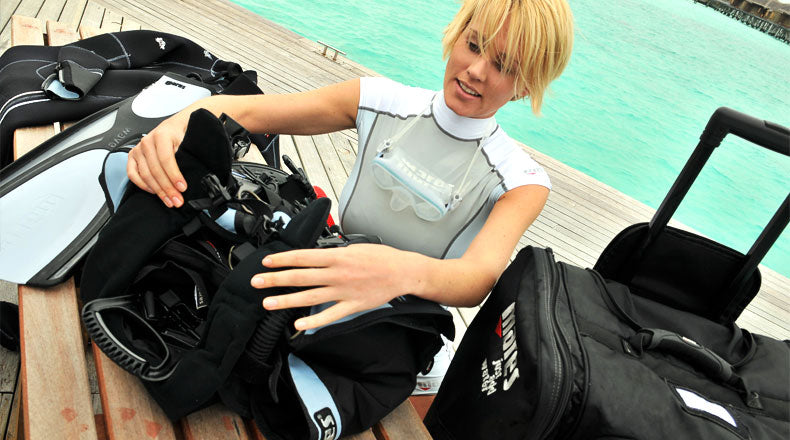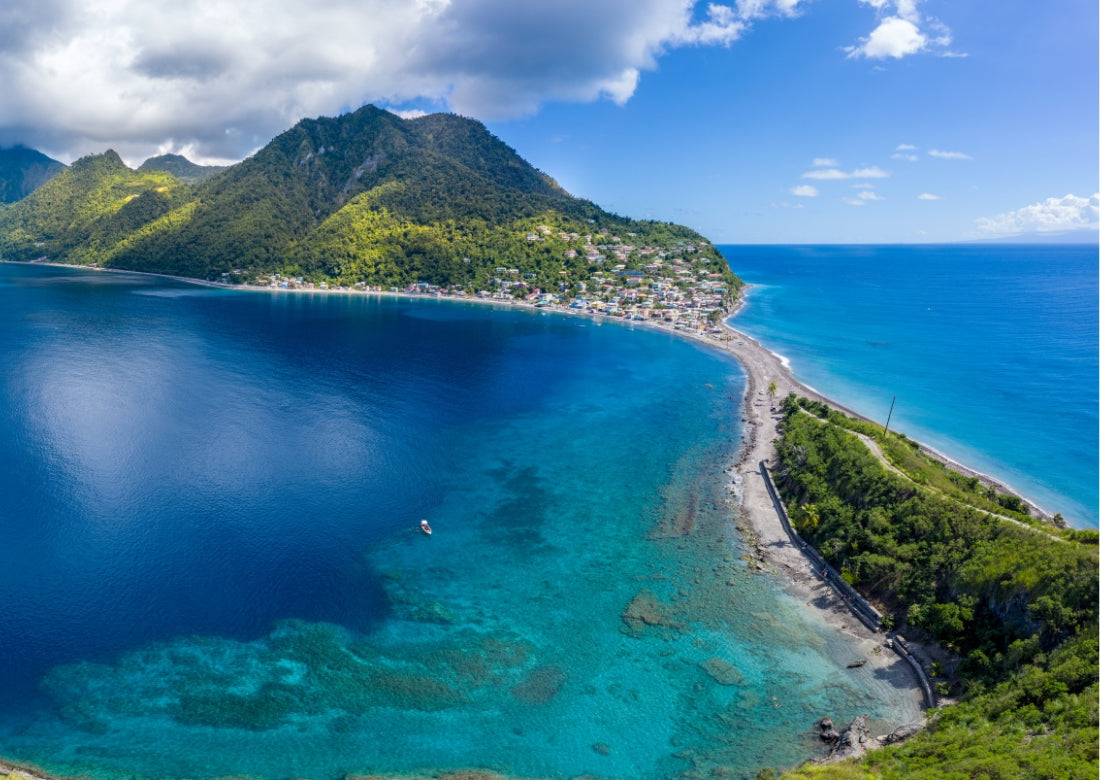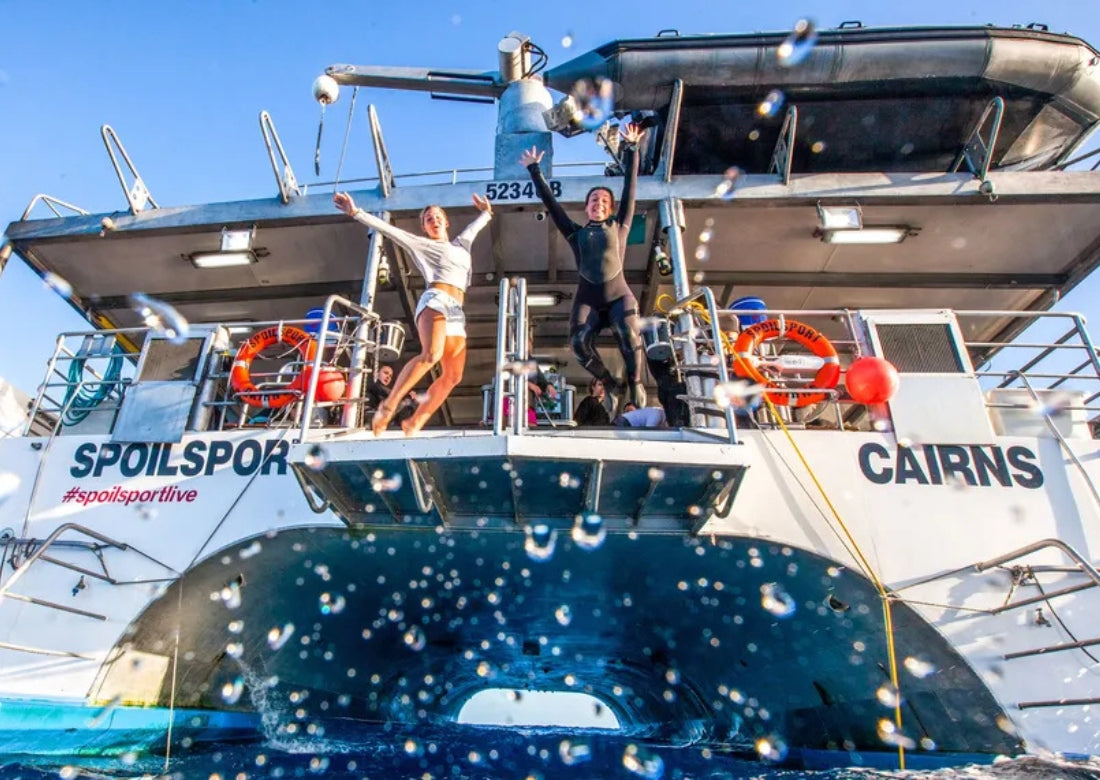Traveling with Underwater Photography Gear: 5 Essential Tips

In recent years, underwater photography has become an increasingly popular hobby, allowing divers to document their adventures and share the wonders of the ocean with others. However, those who get more serious about this hobby or even turn it into a profession, quickly discover that their gear sets start growing, and safely getting all of that equipment to and from their chosen dive destinations can be quite a challenge.
There are lots of things one should consider: what to pack, which bag to choose, whether to check it in or carry it on, how to protect the equipment, etc. This article will help you prepare for the trip and minimize the chance of running into any unpleasant surprises at the airport. So here are our 5 tips for enjoyable travels with underwater photography gear.
1️⃣ Only Take What You Really Need
When it comes to traveling with underwater photography gear, taking too much equipment can quickly become a burden, especially if you're going to remote locations or have limited luggage space. Remember that in addition to the camera, housing, and other photography equipment, you will also have your regular scuba gear and personal items. Therefore, it’s important to resist the temptation to pack too much and instead focus on what will be essential. Will you really need more than three lenses and all the strobes you have? Consider the type of dive you'll be doing, the water conditions, and the subject matter you want to capture and pack accordingly. It's better to have a few quality items that you know how to use than to carry a lot of gear you may not even need.
To stay organized and avoid overpacking, take the time to make a list of the necessary gear. For example, here is a list of gear underwater photographers diving in the tropics might need:
- Camera
- Housing
- Lenses: Macro, Wide-angle, Fisheye
- 2 Strobes
- Strobe cables
- Hard drive
- Ports
- Adapter
- Cords
- Chargers
- Memory card
- Card reader
- Repair tool kit
By packing light, you can not only save space and weight but also enjoy your dive trips without feeling bogged down by unnecessary equipment.
Want to upgrade your kit before the trip? Check out our collection of underwater photography equipment.
Shop Photography Gear2️⃣ Take the Most Expensive and Fragile Gear Onboard
Fragile and valuable equipment such as cameras, housings, lenses, strobes, and laptops should always be in a carry-on. This way only you are responsible for its safety. When you check your baggage, there is often a chance of damage or lost bags on the way to the destination. Sometimes, even theft is possible. So try to fit the equipment for underwater photography within the permitted limits and take it to the cabin. Smaller jets for domestic flights may not have enough space in the overhead compartment, so try to get to your seat faster than other passengers to ensure that your bag will fit there.
If you have to bring a lot of equipment, consider taking some in your pockets. You can use a photographer's vest for this. It may not be very stylish, but your equipment will always be with you.
3️⃣ Choose the Right Luggage
The right bag is crucial because it largely determines whether the equipment will arrive undamaged. Your usual everyday backpack will be suitable for a small waterproof camera, mostly used by snorkelers and casual photographers. If you are more serious about underwater photography, think about the appropriate luggage.
One of the best options is a dedicated padded backpack. It will serve as your carry-on bag and allow you to bring all critical gear items with you on the plane. There is a large choice of backpacks suitable for underwater photography equipment, with special sections for all the necessary parts. It is nice if your backpack has some extra space for a laptop and other small things that should be in your carry-on too.
You can also go for a compact roller bag with a padded insert. Make sure to choose the one that is lightweight and will be the right size for most airlines to fit in the overhead compartment. Take care not to overload your carry-on bags, as you may be asked to check them, and they don’t usually have enough impact resistance to sufficiently protect your gear.
If you have a lot of fragile checked camera gear, a hard-shell case with soft padded sections will be your best bet. Choose the one that will not attract attention. The ideal hard case will look not much different from usual roller suitcases. Additionally, we recommend not putting any stickers with expensive gear brands’ logos to reduce the risk of theft.
4️⃣ Check the Rules
To ensure a safe and smooth journey to your dream destination and back, you should be prepared for any potential luggage inspections. It's advisable to carefully read the rules and regulations of your chosen airline in advance, paying particular attention to any restrictions on luggage weight and size. Do not attempt to cheat the rules by sneaking on overweight or oversized equipment in a seemingly small backpack. While domestic U.S. flights tend not to weigh your carry-on, do not hope for the same on international ones. By following the airline's guidelines and being transparent about your equipment, you can minimize stress and enjoy your trip without any unexpected luggage issues.
Remember that the airport staff is also just people who may forget some of the restrictions, so it will not be excessive to print out or take screenshots of their own rules to make it easier to prove your point if needed. It is necessary to know the allowed sizes and weights of both carry-on and checked baggage. Also, be aware of restrictions on the transportation of lithium batteries, as some airlines may only allow you to carry a certain amount. Don't forget to disconnect all batteries and take them on board, as they are forbidden in the checked baggage for fire safety.
The standard weight for carry-on is 15-20 lbs (7-9 kg), and for checked, about 50 lbs (22.5 kg). If you have expensive equipment, a good idea will be to register it. This is necessary because many countries have strict rules on undeclared equipment, so you need proof that it is your belongings, you are not going to sell it, and you did not buy it in another country.
There are several ways to document your equipment:
- Make a list of all your gear and get an official stamp from U.S. Customs, whose office is usually located at major airports. When preparing for a trip, plan your time to have a spare hour to do that, and arrive at the airport at least 3 hours before your flight.
- Get insurance for your equipment. Thus, you will have a document with a list of your gear and may be eligible for compensation in case of any issues, depending on the insurance policy. Additionally, insurance insurance acts as proof of ownership for your equipment.
- If your equipment set is more expensive than $10,000, you should make a CBP 1099 form.
- You can also make a carnet if you are traveling to a country that accepts one. Carnet will be like a “passport” for your gear. Basically, it is a certificate that allows transporting equipment abroad tax-free for one year.
5️⃣ Think About Backups
On a remote island, you will most likely not be able to repair the equipment in service or buy the necessary replacements. Therefore, given the limitations in the size and weight of baggage, it is worth taking backups.
The most important things you should consider taking as backups are:
- Strobe cables
- Ports
- Hard drive
- Batteries
- Memory cards
These items can come in handy not only for you but also for other photographers on the trip.
Flying to a remote location with your underwater photography equipment can be nerve-wracking, but the stress of airport travel quickly evaporates once you dive into the water and begin capturing stunning images. There's nothing quite like the rush of seeing the beauty of the underwater world unfold before you through the lens of your camera.
With careful planning and a positive attitude, you can embark on an unforgettable adventure and capture some truly exceptional photographs. Bon voyage, and happy shooting!
Here are a few other articles about Underwater Photography and Travel you might like
Read about the most efficient way to pack the rest of your scuba gear in this article.
Packing Your Scuba Gear for Travel
Just starting your journey as an underwater photographer? Read this guide outlining the basic uw photography concepts as well as how to choose and care for your camera rig.






